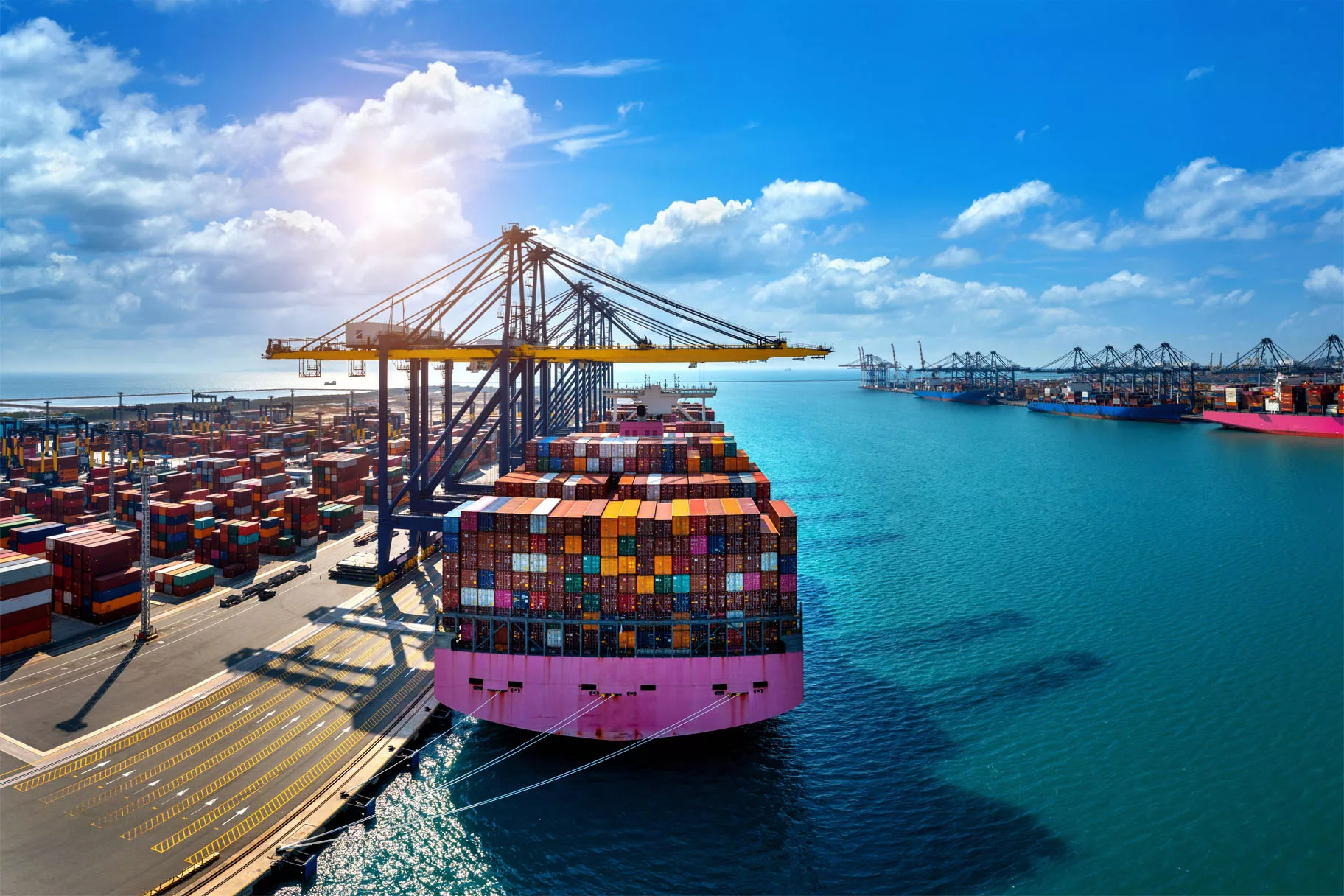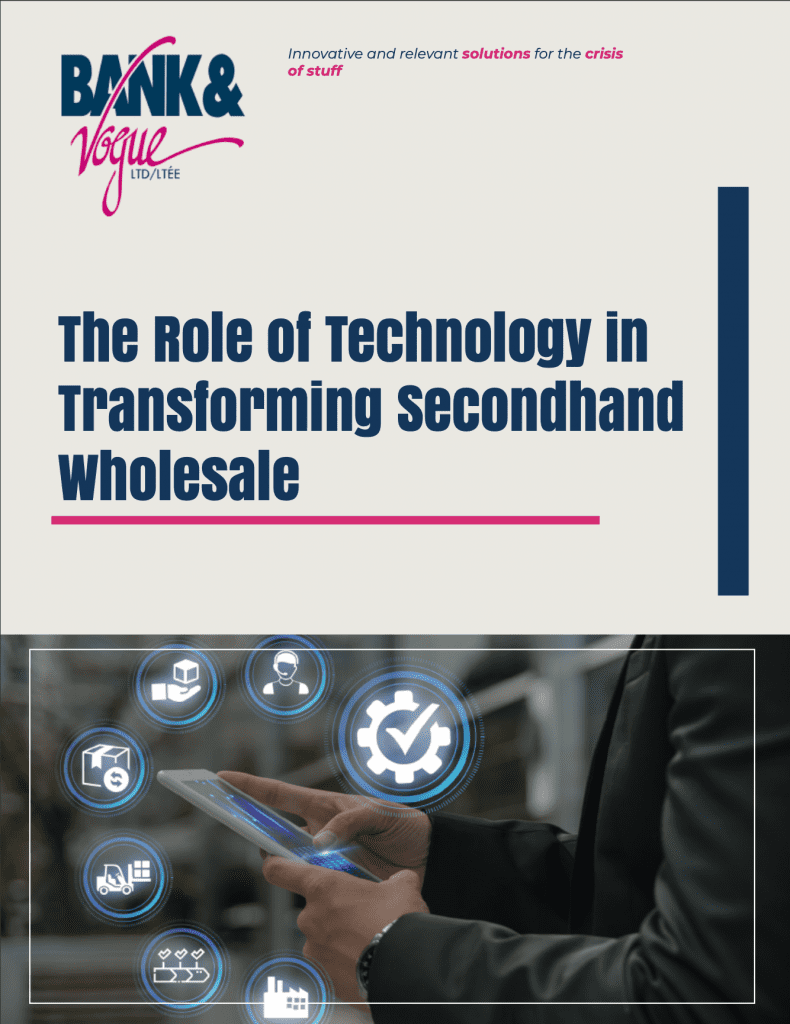Introduction
The secondhand wholesale industry has evolved rapidly over the past decade. Historically reliant on manual processes and traditional supply chains, the sector now faces increasing pressure to modernize and meet the growing demand for sustainable and circular business models. The adoption of advanced technologies such as Artificial Intelligence (AI), blockchain, and data analytics is transforming the way secondhand wholesalers operate. This white paper explores how these technologies are revolutionizing key areas, from inventory management to authentication and supply chain transparency, enabling businesses to increase efficiency, reduce waste, and drive growth in 2025 and beyond.


1. Artificial Intelligence (AI) in Secondhand Wholesale
AI-Powered Inventory Management
One of the most challenging aspects of secondhand wholesale is the unpredictability of inventory, both in terms of quality and quantity. AI-driven inventory management systems can forecast demand, track incoming shipments, and optimize pricing strategies based on real-time market trends. Algorithms analyze data points such as seasonality, geographical trends, and historical sales, helping businesses maintain an optimal inventory balance. By using AI for demand forecasting, wholesalers reduce overstocking and minimize the waste of unsellable items.
Product Matching and Categorization
AI-powered image recognition software can help wholesalers categorize products more efficiently, especially when dealing with large volumes of used goods. Machine learning algorithms can analyze product images to classify them by type, quality, and potential resale value. This speeds up sorting processes and ensures that products are more accurately described when listed for resale, reducing errors and increasing customer satisfaction.
Enhancing Customer Experience
AI-powered chatbots and virtual assistants are becoming essential tools in secondhand wholesale, improving customer support and engagement. These tools can answer questions, provide product recommendations, and streamline the purchasing process, allowing wholesalers to serve customers more effectively without additional manpower.
2. Blockchain for Transparency and Trust
Provenance and Authenticity Verification
Blockchain technology allows secondhand wholesalers to authenticate products and verify their history, ensuring that goods are genuine and traceable. This is especially critical for high-value or luxury items like branded apparel or electronics.


Supply Chain Transparency
Blockchain enhances supply chain transparency by offering real-time visibility into the movement of goods. This reduces fraud and ensures ethical sourcing. It is particularly useful in international secondhand markets, where multiple stakeholders are involved in the flow of goods.
3. Data Analytics for Strategic Decision-Making
Optimizing Sourcing and Procurement
Data analytics tools allow wholesalers to analyze large sets of data to identify trends, forecast market demand, and make strategic sourcing decisions. By understanding when and where to source products, wholesalers can maintain optimal inventory levels and avoid missed opportunities.
Pricing and Market Trends
Wholesalers can use data analytics to track pricing trends in real-time, helping to stay competitive and maximize profits. Advanced analytics platforms also enable businesses to predict future market shifts and adapt accordingly.
Sustainability Impact Analysis
Data analytics helps businesses track and report on the sustainability impact of their operations, such as how much waste is diverted from landfills. By quantifying sustainability, secondhand wholesalers can attract eco-conscious buyers and partners.


4. The Future of Technology in Secondhand Wholesale
Automation and Robotics
In addition to AI and data analytics, automation is playing an increasingly important role in transforming secondhand wholesale operations. Automated sorting machines, for example, can quickly process large volumes of used textiles or electronics, significantly speeding up warehouse operations and reducing human error.
Expectations for 2025
AI and Machine Learning to Accelerate Growth
By 2025, AI’s role in secondhand wholesale will expand further, particularly in areas such as product categorization, demand forecasting, and pricing optimization. Enhanced machine learning models will allow businesses to process greater volumes of used goods more efficiently.
Blockchain’s Expansion into Circular Supply Chains
Blockchain will become an industry standard for verifying the provenance of secondhand goods, improving transparency in the global circular economy. In 2025, blockchain will be crucial for verifying the ethical sourcing and sustainability of products.
Conclusion
As secondhand wholesale continues to expand, technology will be a key driver of transformation. By 2025, AI, blockchain, and data analytics will help businesses improve efficiency, transparency, and sustainability. Those who embrace these technologies will gain a competitive advantage, contributing to the growth of the circular economy and addressing increasing demand for sustainable products.








